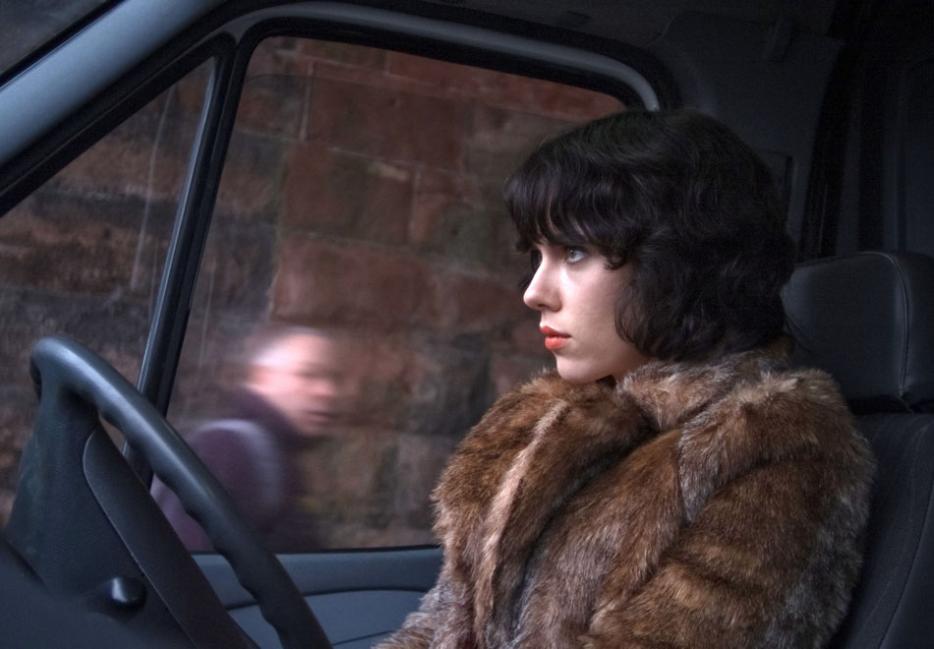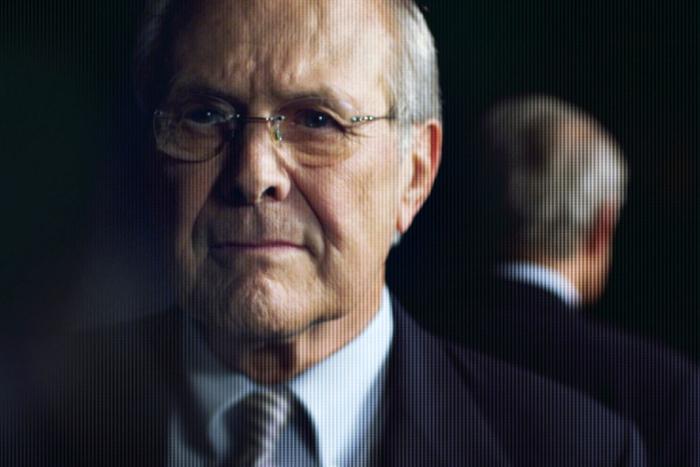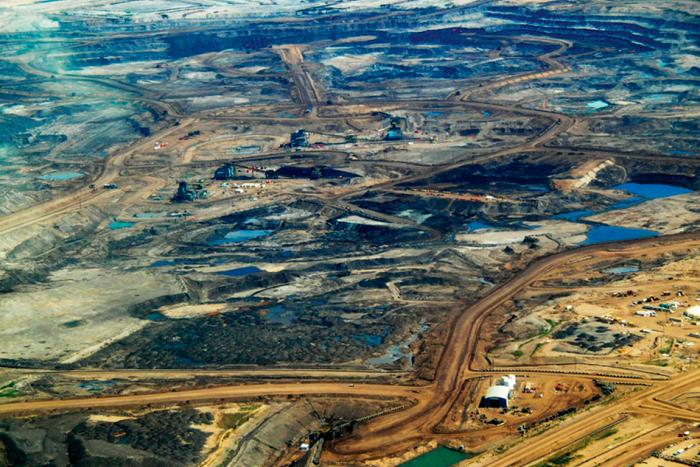This past weekend marked the American theatrical release of Under the Skin, the hotly anticipated third feature by British director Jonathan Glazer (Sexy Beast, Birth), which arrives riding a wave of both praise and consternation in equal measure. It isn’t often that a film confounds so widely and deeply. But for those patient and attuned to the wavelength of one of our most original auteurs, Under the Skin is nothing short of a marvel.
Based on the novel by Michel Faber, it’s the story of an alien scouring Glasgow for young men to court and feed upon. But Under the Skin is not so much a high-concept genre film with arthouse leanings as a carefully sculpted aesthetic and sensual experience, its narrative reduced to the faintest outline.
We sat down with Glazer the morning after his film’s Toronto International Film Festival premiere last September, where it had transfixed and beguiled (and perhaps also frustrated) a sold-out crowd.
I rewatched Sexy Beast recently, and it struck me as not only an aesthetically interesting film, but a very emotionally rich one. It’s a film about love and some unspecified trauma from the past that won’t go away, which gels nicely with the themes of both Birth and Under the Skin. Is that emotional dimension of your work present from the outset, or is it something developed in the process of filming?
With Sexy Beast, I think It was palpable before we filmed. Birth, less so. Birth came more from the process of making the film. Birth was a much more evenly balanced story between the character Nicole Kidman plays and the character Cameron Bright, the boy, plays. In the making of the film, you intuit where the strengths of those performers are and where the real strength of the story lies. You adapt your screenplay accordingly as you’re making it, as you’re filming.
Sexy Beast was written beautifully and the emotion was entrenched, it was part of that. I think those themes that are coming through for you are unconscious things. You don’t set out to write things. There was a guy who asked a question in a Q & A last night which was about themes. You intellectualize things, but only afterwards. I think they come from the subconscious before, and then you test them rigorously. Intellectually, you challenge them. They don’t come from quite such a heady place.
I read an interview you’d done around the time Sexy Beast premiered in which you said that if there were one thing you disliked about the film, it was that too much was explicated. You said you would have preferred to make it less obvious in narrative terms. Under the Skin seems like a realization of that impulse: it’s boiled down to a feeling and to an atmosphere. Did you set out to build a film out of a tone or atmosphere from the beginning?
Yes, I did. That combination of form and content, or where form is content. This story, because it was told from the point of view of the central character, who happens to be an alien, your perspective is her perspective and it’s a very unusual one. You have to find a visual language to express that, and that takes you to all kinds of weird and wonderful places. There are things you simply can’t articulate because she is an alien. You can’t have two aliens sitting in a bar and chatting about their day at work. As much as you’d like to and you try to, you can’t.
Me and Walter [Campbell], who wrote the script with me, we would jettison everything. We’d write, try and find ways of articulating things, but they just never fitted. They never felt true. It really felt like we needed to discover the story as she does. We needed to be alongside her and hold the belief that if you follow what she’s feeling, then you follow the story. To drift with her, to be adrift with her. It was really finding a language that would serve that. So, you can’t rely on a theatrical three-act narrative structure. You can’t do that. There still needs to be an arc and a journey, a kind of burgeoning intuition and unconsciousness or whatever it is that happens to her. It’s almost as if you’re trying to film an internal flood, and then you use music to help describe that in ways words could never, sound design to describe motifs that recur, mirrors that are almost waiting for her reflecting, you know what I mean? You find ways, you put clues in there.
But, the actual story, the foreground story, is just her—and that became fascinating to me. The architecture, the plot, it was rigorously examined. You have to build on solid foundations and those foundations are there. They may be opaque at times for some, but they are there. You have to own your own ambiguity. It’s very important. As much as you can.
One thing I like about the film, and I don’t think I’ve ever seen it done like this before, is the idea of alienation as a shortcut to empathy. Usually when movies use alienation effects in some way, it’s to distance the audience from the film. In this, you take the most everyday sights and sounds and you defamiliarize them to the audience in the same way that they’re unfamiliar to her, and make them seem very strange. For me, it helped as an empathy tool. How did that come about in terms of trying to find a way in for the audience into the character?
When you commit to her point of view as your point of view, you’re looking and hearing things through her. She becomes a cipher. Everything magnifies in importance or sensation. Then, you’re really selecting things. I didn’t want it to dwell lyrically, I didn’t want her to be staring out of windows. That’s not what we were chasing. But, you audition every sound, every note for the education it gives her.
We ended up constructing a soundtrack. Johnnie Burn, a brilliant sound designer, constructed the soundtrack using the stuff you’d normally throw away. We wouldn’t throw it away because it was too noisy. Those things were the building blocks for the entire soundtrack. When you make a film, what you’re trying to achieve is a unity of all your ingredients. That’s your job as a director, to communicate as best you can, hopefully have a dialogue with the people who watch the film. You want a dialogue with the film and to find a unity. If you can do that, if you are dedicated to that task, then I think you’ve got a chance of going into interesting places.
The sound and the music and everything was so carefully deliberated that cumulatively, that becomes the narrative. The experience you’re talking about is as a result of everything being heard through her ears and the way the images are somehow seen through her eyes. It’s very interpretive.
When you make a film, what you’re trying to achieve is a unity of all your ingredients. That’s your job as a director, to communicate as best you can, hopefully have a dialogue with the people who watch the film.
You have such a precise, formal style. There’s a lot of precision to the look of your films. With this film how did you reconcile that precision with the necessary spontaneity of the way you wanted the film shot?
I like formalism in films. I’m a big fan of the decision of where to put the camera. That moment of, “The camera is going to go there,” and the reasons for that. I like the chaos within that formal frame. I like that relationship. Scarlett driving around, for instance—there are eight camera angles that are rooted and calibrated and chosen and selected and lensed and I know exactly why those eight cameras are where they are, and what they’re going to achieve. The scene we end up cutting, we may end up using only three of those cameras, but I need those eight cameras for the things that may unfold. Then, you’ve got your formalism, and off you go into the world and wait for the chaos, miasma of life as it may happen. You’ve got the perfect ingredients.
For this film, the formalism felt decisive. To me, it felt like the right choice for this film because there was a certainty in the focus. Then, you allow the wildness and chaos of the present tense, whatever is happening, to happen at that moment. If Scarlett turns left and talks to that guy, the film is going to go down that street. Had she turned right and gone there, it could have been a completely different thing entirely.
I assume these are very discreet cameras.
Yeah, they’re tiny.
Could you have achieved this a number of years ago, on a technical level?
No. The decision to shoot digitally was because I needed cameras in small places where they could be hidden. There was no way to shoot it on film cameras and achieve what we did. But there wasn’t a camera out there that could achieve what we were trying to achieve, which was to be small enough to be concealed in a dashboard, but have the kind of image quality to project it at the size it needs to be projected. There wasn’t a camera that did that. So, the people I work with said, “Let’s build one, let’s build a camera.” Sure enough, we got a camera system and the film is photographed using a brand new camera made as a tool that didn’t exist. That couldn’t have been done five years ago. It’s very much of its time.
And yet you’ve been working on this project for more than a decade.
Yeah, something like that.
What were you envisioning back then?
I was envisioning something very different with a very different cast and a very different story, a more faithful adaptation of the book. Over the years, it just—partly because I hadn’t got it together, something hasn’t happened, I haven’t got the right script ingredients, the cast, the money, whatever it is that hasn’t been right, or I haven’t been ready for it. Over the years, it got closer and closer to the film we ended up making. That’s taken the time it’s taken. I couldn’t have predicted that. Birth knocked the wind out of my sail for a year or so, if I’m honest. I had chunks taken out of me with that one.
It does affect your confidence, it affects your decisions and the way you think about things and the way you think about film, the kind of films you want to make. You have to get your breath back. But I was absolutely more determined to continue down this road. This story seems to be the one for me to tell. That’s the one I wanted to make, and the fact that one became two and two became four and four became six, I wasn’t counting, you know what I mean? You’re just in it. It’s a long line, a long process. Actually, the journey and the process are the joy of it. There’s no rule book to say how many films you should do. It’s just the way it worked out.
I noticed that throughout your work, including video work and commercial work, the sense of place that’s conveyed is very important to both the story and the drama, and also the feeling. How does the environment figure into things for you on a formal level, thematic level, whatever it may be.
I want to set something somewhere. I want to know where I am and I want to be where I am, and I don’t want to shoot it like a tourist. I don’t want to feel like I’m there because it’s beautiful. I’m there because I want to root it where it is. I was offered money earlier in the process of this film to make it in Romania. I said, “Well, If we’ll be shooting in Romania, we will be shooting in Romania,” I was up for that. But I didn’t want to make Romania as Scotland or Detroit as [somewhere else], I don’t want to play that game. I want to be where I am. I want to film where I am. I’m very determined to do that. I don’t know why, but if that conveys a sense of place, then it’s probably because of that.
You have to build on solid foundations and those foundations are there. They may be opaque at times for some, but they are there. You have to own your own ambiguity. It’s very important. As much as you can.
The novel is set in Scotland.
The novel’s set in Scotland, absolutely. There was no reason to change it. There are many reasons why Scotland is great for this story, I think. It’s very underpopulated, the wilderness, the mythic landscape. Also, the kind of urban sprawl, as well, and the proximity of city territory to wild territory. It’s very exciting.
Maybe this is unintentional, because this would play differently to different audiences, but the accents are so thick in Scotland it sort of adds to the feeling of alienation when Scarlett is talking to them.
Yeah, of course.
You shot a lot from the van, documentary-style, just random people on the streets as Scarlett’s character drives around. How much of what you shot that way ended up in the film?
I probably used 15 percent of what I shot. There were people we shot that were fantastic interactions but I couldn’t use, because they didn’t give us permission to use the footage. That’s the game, you know. It’s a roll of the dice. I would still be shooting in that van, given the choice. I would be out there today, still filming Scotland, driving around. It was exhilarating. The footage was magnificent.
I’m not sure I’ve ever seen a film that combines a documentary approach to real people with a fictional character and scripted events before, at least not outside of stunt comedy like Borat and things like that. Never for drama before. Did you have any inspirational basis?
There are great sequences in the streets in Murnau’s Sunrise, there are the Italian neorealists—I haven’t invented anything here. I think maybe the interaction, maybe the fact that our drama interacts with the world as it is—like, by pure chance, that man walks down that street and Scarlett talks to him, and filming that and that making it into the film, that being what the film`s about… maybe that’s a very interesting note. Whether it’s a new note or not, that’s irrelevant to me. What`s relevant is that it works for this story and I feel it does.
There were times where I said to Jim, the producer, while we were filming, “You know, I’m tempted for us to just throw the story away and just stay in this van and see what happens.” He said, “You need to go to sleep. Go get some sleep.”
I think there’s something to be said about the familiarity of Scarlett Johansson’s face in the context of the film. This is not a “Why work with Scarlett Johansson” question. Rather, did you want to feed on her iconography?
Sure! Absolutely, I was. That was the role, that was the character. The character was there to be objectified, basically. The journey that we go on with that character encounters that. That’s where it’s interesting. Also, the fact of seeing Scarlett in disguise and feeling that she’s the lie in the film. She’s the Trojan horse. “That’s not her real accent,” “That’s not the way she looks,” “She’s got a wig on!” Those things that go through your head are good, because you think you’re dealing with a lie. She’s a lie. That lie corresponds to the character’s lie.
It’s really using all of those ingredients and turning them into the fuel of the character. Sorry, that’s ridiculous, I don’t mean fuel. I mean turning that to our advantage. Then, Scarlett—I remember the way she walks along in her pink top down into where she gets on the bus, and I remember saying to the cameraman when she was walking down that street, “She looks like an exotic insect on the wrong continent.” You know what I mean? I really loved that. I loved how inappropriate she was there.






